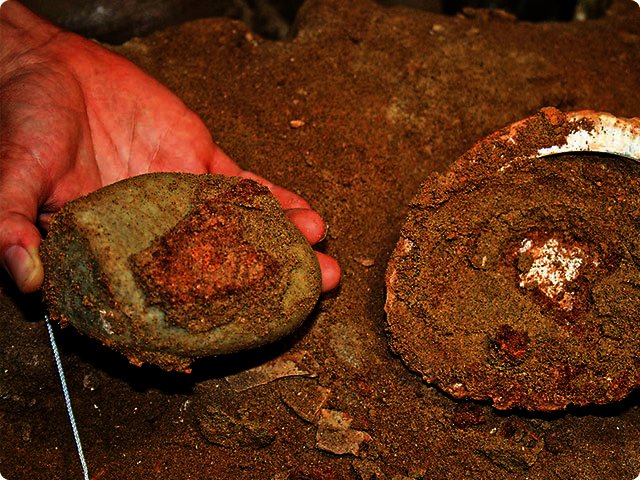PREVIOUS ARTICLENEXT ARTICLE
NEWS

SciNews November 2011
By Linda Pretorius 1 November 2011 | Categories: news
Happy tweet
A little birdie tells us that mornings are happy hours. Researchers write in a recent report in the journal Science, that they tracked Twitter messages to study how people’s mood changes during the course of a day. The team analysed tweets of almost 2.5 million people across 84 countries over two years, recording expressions of emotions such as enthusiasm, delight, alertness, distress, fear and anger.

Positive emotions tend to peak early in the morning, but gradually dip during the day. Another positive peak was seen close to midnight. Positive tweets were also more often sent over weekends, although the early morning peaks occurred about two hours later than on weekdays. The results suggest that work stress puts a damper on positive attitudes. You don’t say.
A breath of fresh air
When it comes to that stuffy feeling, your nose knows. According to a report in a recent issue of the open access journal PLoS ONE, the physical nasal obstruction experienced during a cold or allergy isn’t the only thing that makes you feel congested. Scientists asked 44 volunteers to breathe air of normal humidity at room temperature, dry air at room temperature and cold air and then rate the feeling of congestion.

Breathing cold, dry air was associated with the least discomfort. The researchers think that sensors inside the nasal passages monitor the temperature and humidity of air passing through and that the combination of cold and dry air signals unobstructed flow. The findings may be used to develop new treatments for stuffy sinuses.
Paint shop pros
It seems our early ancestors had mixing paint down to a tee. A team of scientists write in a recent issue of the journal Science, that they have discovered the remains of paint mixing tools in Blombos Cave near Mossel Bay. The small toolkits consist of ochre-rich rock powder, grindstones, bones and charcoal in two abalone shells. The paint was possibly used for both wall and body decoration.

Using a dating technique called optically stimulated luminescence, the researchers were able to date the find to about 100 000 years ago. Since common use of ochre pigments was previously thought to have developed only later in the Stone Age, the new finding is an important benchmark for the evolution of mental processes in humans. And you thought living 100 000 years in the past was dull.
The hand that rocked the Cradle
The world of human evolution has been turned upside down, thanks to bones found at the Cradle of Humankind towards the end of 2008. In an early September issue of the journal Science, a team of scientists describe features that suggest Au. sediba may be the oldest ancestor of us modern humans’ genus Homo.

Photo by Brett Eloff, courtesy of Wits University.
Reconstruction of an almost complete hand shows that Au. sediba had long thumbs and fairly short fingers, and possibly strong hand muscles. This suggests that although able to deftly clamber around in trees, Au. sediba likely also handled tools with skill. Au. sediba lived about 77 000 years earlier than the “Handy man”, Homo habilis, which was previously thought to be the start of the distinctly human line of hominins. Learn more about Au. sediba’s striking features at www.wits.ac.za/sediba.
Mirror, mirror on the wall
According to a recent report in the science journal Angewandte Chemie, the surface of flat mirrors can be manipulated to reflect weird images. Conventional physics laws predict the change in the path of a light ray when it hits a new optical medium. Usually the surface of the new medium is only the boundary.

But when a team of physicists shone light onto a silicon surface etched with gold nanostructures, they found that the surface itself also acts as a medium in which the light travels. And depending on the specific pattern on the surface, light reflected in unpredictable ways. This led them to adapt the general equations that describe the path of travelling light. And you thought things never change in physics.
Smart foam
Imagine foam that doesn’t fizzle out to soapy strands in the tub after a while. It’s possible, say scientists in a recent article in Science. Studying the properties of a molecule derived from castor oil, called 12-hydroxystearic fatty acid, the team found that mixing it with a specific salt and then adding a little water created foam that lasts for almost six months.

By changing the temperature of the water they could manipulate the stability of the foam bubbles. Microscopic analysis showed that at temperatures below 60 °C, the salt–fatty acid mix produces rigid tube-like structures in the soapy film of a foam bubble, which keeps the bubble stable. Above 60 °C, though, the tubes merge into tiny spheres, causing the film to collapse. The finding could be very useful for cosmetics and detergents.
More amazing science:
The most vital scientific lessons that need to be communicated: bit.ly/mostnbq
Scientists on trial for not predicting earthquake: bit.ly/trialshake
Black hole jets gone wild: bit.ly/blackholejets
Challenges in developing a car that can travel 1610 km/h. bbc.in/fastestinworld
Six-legged robotic bug sheds light on the evolution of flight. bit.ly/buggingfly
An amazing video of quantum levitation in action. bit.ly/ibelieveicanfly
TAGS:
USER COMMENTS
Most Read Articles
Read

Magazine Online
TechSmart.co.za is South Africa's leading magazine for tech product reviews, tech news, videos, tech specs and gadgets.
Start reading now >
Download latest issue
Have Your Say
What new tech or developments are you most anticipating this year?
New smartphone announcements (45 votes)
Technological breakthroughs (29 votes)
Launch of new consoles, or notebooks (14 votes)
Innovative Artificial Intelligence solutions (29 votes)
Biotechnology or medical advancements (24 votes)
Better business applications (160 votes)



